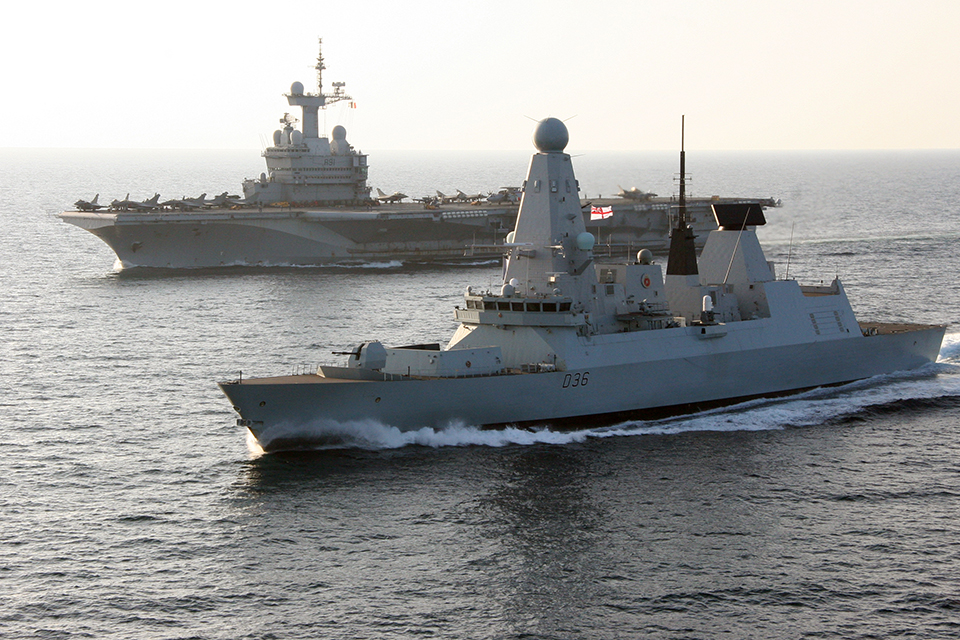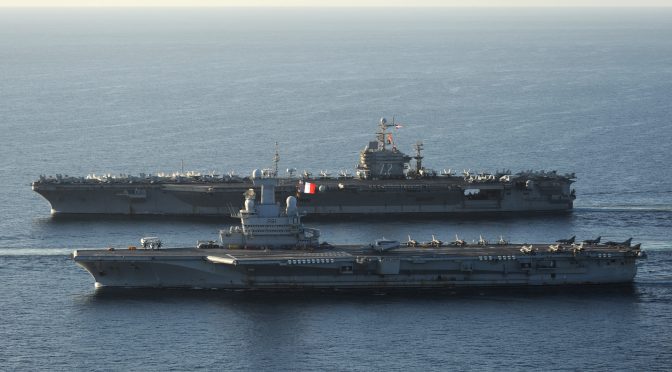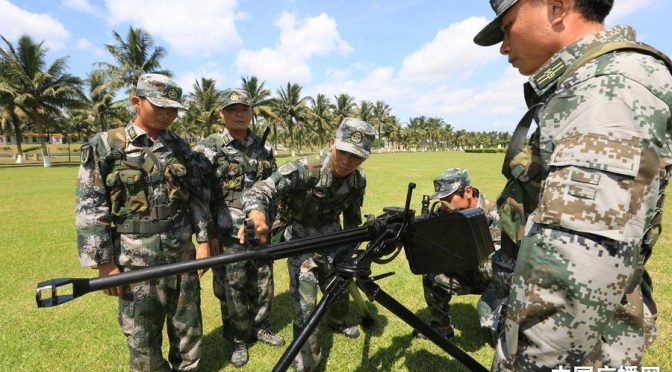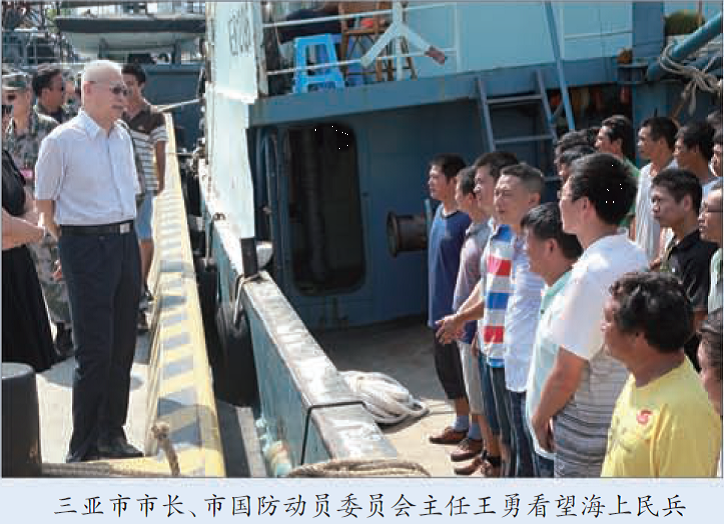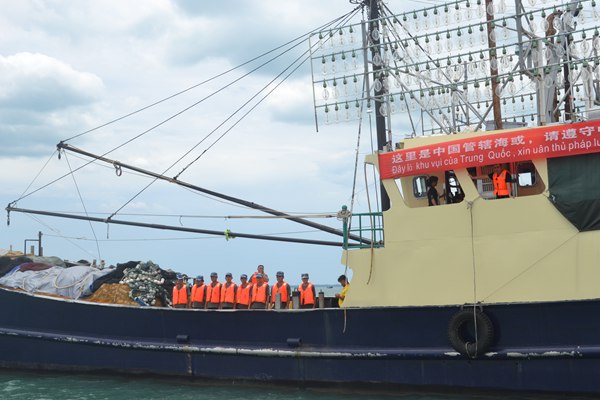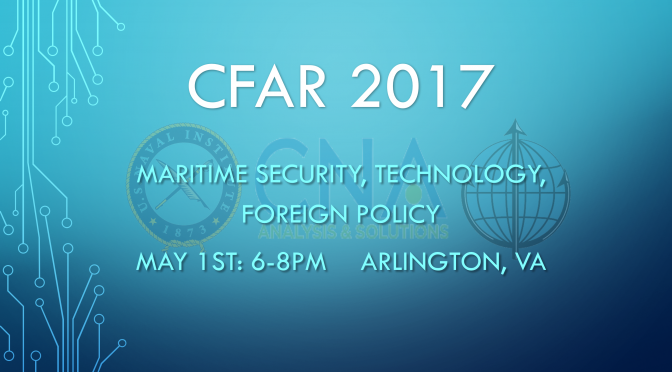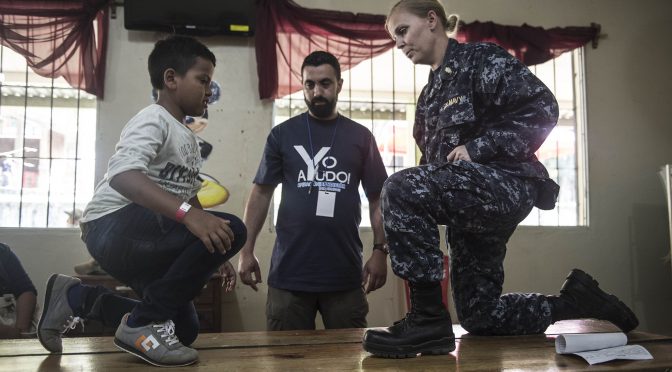The following article originally featured on Small Wars Journal and is republished with permission. Read it in its original form here.
By Paul W. Taylor
“We will look for new ways to enhance relationships and form partnerships with traditional and nontraditional maritime partners who share a stake in international commerce, safety, security, and freedom of the seas.”[i]
In March 2015, the Sea Services (the U.S. Navy, Marine Corps, and Coast Guard) jointly published an updated version of their Cooperative Strategy for 21st Century Seapower (CS-21), which “affirmed our focus on providing presence around the world in order to ensure stability, build on our relationships with allies and partners, prevent wars, and provide our Nation’s leaders with options in times of crisis.”[ii]
This strategy repeatedly emphasizes the role of partnerships in projecting American influence, gaining access, building security, and protecting and promoting trade.[iii] Such partnerships are in fact necessary to both of the two “foundational principles” upon which the CS-21 is built: that “U.S. forward naval presence is essential to accomplishing the … naval missions derived from national guidance” and that “naval forces are stronger when we operate jointly and together with allies and partners.”[iv] But development of partnerships (even primarily military partnerships) often requires and nearly always benefits from engagement with non-military partner nation organizations. And this is the bailiwick of civil affairs (CA) forces, an area in which the U.S. Navy is particularly weak.
The Problem
While each military service is required to maintain a civil affairs capability,[v] the US Navy recently divested itself of its only civil affairs capability, the Maritime Civil Affairs and Security Training Command (MCAST).[vi] This policy required each of the Services to maintain civil affairs capabilities and directed the Secretary of the Navy to “provide for civil affairs personnel and units in the Navy and Marine Corps military force structure.” While it may be disputable whether the structure of MCAST (a headquarters that would assemble CA teams when requested) fully satisfied the formal requirement for civil affairs units, it did provide a niche capability that was in clearly in demand by the Geographic Combatant Commands, particularly SOUTHCOM, AFRICOM, and PACOM. Its participation in efforts like Community Watch on the Water—a campaign conducted in collaboration with the Kenyan government, local law enforcement, and local citizens to build trust and reduce crime and violent extremism[vii]—proved its value as a member of the civil affairs community despite its small size and short lifespan.
It appears that the Navy’s current position is that while it fully supports the Joint Staff effort to ensure adequate maritime civil affairs capabilities in order to shape the security environment and promote global prosperity, instead of having standing general-purpose civil affairs capability, Navy maritime civil affairs capabilities are available through the existing Request For Forces (RFF) process once a specific maritime need is identified. Assuming that an RFF adequately identifies the desired expertise, the Navy will provide an adaptive force package to meet the maritime civil affairs requirements detailed in the request.
But implicit in this policy is that the Navy will provide maritime-specific civil affairs capabilities rather than generalized civil affairs capabilities, such as those found in the U.S. Army and Marine Corps. Thus, in order to support the Navy position on civil affairs, some definition of maritime civil affairs is required. However, to date, no comprehensive definition or description of maritime civil affairs has been promulgated by the Navy, in joint doctrine, or in Department of Defense policy guidance.[viii] Without such a definition, it is impossible to assess whether the Navy is achieving the standards it has set for itself, or to inform the other services and interagency partners what support they may be able to expect.
The following paragraphs approach this issue from several directions, first by simply “marinizing” the joint doctrine definition of civil affairs, next by exploring the mission sets which would most likely require some form of maritime civil affairs, and lastly by looking at some of the maritime skill sets that may be required in civil affairs missions. These aspects, taken together, will form the basis of an improved understanding of this little-understood military specialty.
Defining Maritime Civil Affairs
A basic approach to developing a definition or description of maritime civil affairs is by asking what is “maritime” about it. Civil Affairs in the general sense is defined as:
“Those military operations conducted by civil affairs forces that enhance the relationship between military forces and civil authorities in localities where military forces are present; require interaction and consultation with other interagency organizations, intergovernmental organizations, non-governmental organizations, indigenous populations and institutions, and the private sector; and involve application of functional specialty skills that normally are the responsibility of civil government to enhance the conduct of civil-military operations.” (JP 1-02)
Simple “marinization” of this definition would be the easiest method of developing a definition of maritime civil affairs. According to this method the definition of maritime civil affairs would be something like:
“Those military operations that enhance the relationship between military forces and civil authorities in localities where maritime forces are present; require interaction and consultation with other maritime interagency, intergovernmental, and non-governmental organizations; indigenous maritime populations and institutions; and the maritime private sector; and which involve application of maritime functional skills to problems that normally are the responsibility of civil government to enhance the conduct of civil-military operations.”
This definition may be passable for doctrinal purposes, but standing on its own it would not answer many of the fundamental questions: which civil authorities are maritime? What populations are considered maritime? What is the maritime private sector? Answering these questions is the much harder part of developing a workable understanding of “maritime civil affairs.”
Maritime Civil Affairs Missions
A fact sheet from the Navy Expeditionary Combat Command (NECC) described MCA as “an enabling force working directly with the civil authorities and civilian populations within a Combatant Commander’s maritime area of operations to lessen the impact of military operations imposed during peacetime, contingency operations, and periods of declared war.”[ix]
One method of developing a definition or description of maritime civil affairs is to identify types of missions that would require civil affairs that are unique to the maritime domain or by their nature require naval personnel. In this vein, maritime civil affairs missions can be categorized in three ways: missions that require a good grasp of maritime culture; missions that require a good grasp of the maritime environment; and missions that require a good grasp of the U.S. Navy’s unique organizational culture and capabilities.
The first category, grasp of maritime culture, includes qualities such as the ability to engage with maritime professionals and industry; understanding the risks and rewards of maritime life and livelihood; grasping the “dual pattern of life” characteristic of seafaring professions; and being conversant in maritime legal issues such as exclusive economic zone management, sovereign rights and responsibilities in the maritime domain, and freedom of navigation.
The second category highlights the unique characteristics of the maritime environment. Civil affairs practitioners operating in the maritime domain must have a clear understanding of maritime resources, such as natural and man-made harbors, fisheries, seabed resources, aquaculture resources; maritime economy and infrastructure, such as ports, harbors, fishing, undersea resource extraction, aquaculture, channel and lock usage and maintenance, and the riparian economy; and threats and opportunities in the maritime environment, including severe weather, the water-dominated environment, piracy, sea fauna. Performing standard CA activities such as humanitarian assistance and disaster relief and population and resources control take on additional planning, training and resourcing considerations to address the challenges presented by operating in the maritime domain.
Missions requiring a depth of understanding of the Navy’s unique organizational culture and capabilities include naval operations that may require civil affairs capabilities, whether specialized or general. These requirements are often seen in requests by Naval Special Warfare Command and Construction Battalion (Seabees) requests for CA augmentation or CA training. Civil affairs capabilities would also be greatly beneficial for missions requiring sustained interaction with ports and fishing communities, especially those close to congested sea lanes. Lastly, some landward missions may require an understanding of USN resources and culture.
While some of these requirements may be sufficiently satisfied by U.S. Army or Marine Corps civil affairs personnel who receive specialized pre-deployment training, the number of requests for maritime specialization will likely far outstrip the availability achieved through this method.
Maritime Civil Affairs Functional Areas
One major shortcoming of MCAST, which likely contributed to its demise, was its failure to distinguish itself from the capabilities provided by other services. Available sources on MCAST’s civil affairs capabilities do little to explain what MCAST provided that an Army civil affairs team would not. However, focusing on functional specializations, in addition to better aligning with the Navy position, will help to elucidate what it different about maritime civil affairs, and what benefits a Maritime Civil Affairs Team (MCAT) might provide to a combatant commander.
Whereas CA generalists work to reduce “civilian interference with military operations, [mobilize] civilian resources to support military operations, and [conduct] humanitarian operations,” CA functional specialists provide specific expertise in civilian subject matter areas, typically to assist in the protection and reconstruction of civilian systems, infrastructure, and ministries, or to support niche requirements for civil-military teaming.[x]
The sixteen joint civil affairs functions provided in Joint Publication 3-57, Civil-Military Operations are food and agriculture, economic development, civilian supply, emergency services, environmental management, cultural relations, civil information, dislocated civilians, public administration, public education, public safety, international and domestic law, public health, public transportation, public works and utilities, and public communications.
None of these areas are explicitly maritime in character, but most if not all can be conducted in the maritime domain. Furthermore, the difference in the operating environment constitutes a different problem set from that faced by land forces. For example, food and agriculture in the maritime domain includes such activities as fisheries and aquaculture, economic development at sea can range from shipping to undersea extractive industry, emergency services such as search and rescue and tsunami warning systems are constant demands, environmental management is required to protect sensitive ecosystems at sea and riparian areas from military operations and poorly regulated economic activity. Additionally maritime-specific forms of international and domestic law, public health and safety, transportation and public works and utilities all exist, all of which makes for a credible implication that a generalist in maritime civil affairs may be needed.
But focusing on the more specialized functional areas, a 2007 brief from the commander of the Maritime Civil Affairs Group (MCAG), a predecessor to MCAST, stated that in addition to the sixteen joint CA functions, the functional areas of MCA include port operations, marine resources, harbor and channel construction and maintenance, and fisheries.[xi]
Based on the above mission sets and the operational role of CA officers, we can identify some basic knowledge and skill sets required for maritime civil affairs, which may provide the basis for functional specializations:
- Protection of the maritime environment;
- Operation and maintenance of ports, harbors and waterways;
- Governance of maritime environments, industry, and resources; and
- Maritime law enforcement, security, and safety, including migration control.
Each of these functional areas overlaps to a significant degree, but no more so than many of the joint civil affairs functions listed in JP 3-57. Nor is this overlap necessarily a drawback, given the interconnectedness of governance issues in any reasonably well-defined domain. Indeed, each of these areas is also interconnected with land-based civil affairs areas. For example, watershed and water table management would be a necessary component of both food and agriculture and environmental management joint functional areas, but would immediately impact protection of the maritime environment as both are part of the same hydrologic cycle. Similarly, the operation and maintenance of ports, harbors and waterways would tie directly into the public transportation joint functional area in particular, but also most other functional areas as well.
Recommended Changes to Navy Policy
Maritime civil affairs capabilities can play an important supporting role in in overseas operations of all types, from humanitarian aid and disaster relief to major combat operations. MCAST proved this in its operations ranging across South America, Africa, the Middle East, and South East Asia, including Iraq and Afghanistan. Maritime civil affairs, especially when partnered with its more traditional land-based counterpart, can enhance the effectiveness of military operations through engagement with civil components of the maritime environment and providing civil information management for use in planning in all operational phases.
But the Navy’s current plan for providing these requirements is not workable. That its role spans the breadth of the conflict spectrum, and its required skill sets are difficult to build (or to identify within the resident force), suggests that ad hoc measures to develop “tailored” civil affairs capabilities to a given operational requirement will result in capabilities being provided too little and/or too late.
Additionally, this assumes that combatant commanders know that the ad hoc capability is available to them. However, given the sharp decline in requests for Navy CA capabilities following the disestablishment of MCAST, this is very unlikely. Instead, anecdotal evidence suggests that combatant commanders have shifted their requests for maritime CA capabilities primarily to the US Army.
The CS-21 states that the Navy will “take advantage of adaptive force packages to enable persistent engagements that build the capacity of allies and partners to respond to future crises.”[xii] Civil affairs capabilities are an important tool to add to this toolbox, whether as part of a maritime component theater engagement effort or as a part of a joint contingency operation.
While the Navy position is relatively clear that maritime CA is not envisioned as the province of a generalist, but is a relatively narrow functional specialization, the third mission area listed above implies a generalized maritime CA requirement. This does not necessarily mean that the Navy should produce true “generalists” in civil affairs. Instead the same effect could be provided in several ways. One is by ensuring that the training provided to maritime functional area specialists includes a portion designed to ensure that they are able to integrate not only into maritime civil-military operations planning teams, but those operating in multi-domain environments as well. This is something that should be done in any event, since few missions requiring civil affairs capabilities will be purely maritime.
A second method would be for the Navy to provide “generalists” in maritime civil affairs, with some training in all functional areas, but focusing on maritime functional areas. In this sense, there would be only one “specialization” in maritime civil affairs writ large, even as individual practitioners would naturally be more skilled in one or two specific functional areas. This option would comport best with the Navy’s general approach to officer professional development practices, which favors generalization and broad professional communities that are then further narrowed as one drills down into the specifics.
In either case, without some standing method of generating maritime civil affairs practitioners, there is little hope that the demand for maritime civil affairs will ever be satisfied. There are multiple ways of achieving such a capability at relatively little cost. For example, SeaBees seeking civil affairs capabilities are regularly admitted to the U.S. Marine Corps Civil-Military Operations School (CMOS). An agreement could likely be reached with relatively little effort to set aside a certain number of seats at CMOS for Navy personnel. This, combined with a course (likely also hosted at CMOS) on the maritime functional areas, would generate maritime civil affairs practitioners at very little cost to the Navy. A similar partnership may be possible with the U.S. Coast Guard. While the Coast Guard does not practice “civil affairs,” many of its international training activities closely parallel many of the maritime civil areas functional areas discussed above.
Conclusion
Maritime civil affairs capabilities play an important supporting role in in overseas operations. However, without an established method of generating maritime civil affairs practitioners, the demand for maritime civil affairs will never be adequately satisfied. However the result is achieved, the U.S. Navy should seriously consider developing a true maritime civil affairs capability, not only because it is required by Department of Defense policy, but more so because the evident demand for such a capability on the part of the combatant commands and the clear benefits that such a capability provides for the Navy’s own strategic ends to “defend the homeland, deter conflict, respond to crises, defeat aggression, protect the maritime commons, strengthen partnerships, and provide humanitarian assistance and disaster response.”[xiii]
Paul W. Taylor is an enlisted Army veteran of Iraq and Afghanistan, now providing support to the US Navy as a defense policy and strategy analyst in maritime irregular warfare at the Pentagon. Paul holds a JD and MA from Seton Hall University, where he focused on security and rule of law issues.
The views presented here are those of the author and not necessarily reflect those of the U.S. Navy or the U.S. Department of Defense.
Endnotes
[i] Statement 0f Rear Admiral Kevin Donegan U.S. Navy Deputy Chief Of Naval Operations For Operations, Plans and Strategy (N3/N5) – Acting and Major General Andrew W. O’Donnell, Jr. U.S. Marine Corps Assistant Deputy Commandant, Combat Development and Integration before the Subcommittee on Seapower and Projection of Forces of The House Armed Services Committee and the Subcommittee on Coast Guard and Maritime Transportation of the Transportation and Infrastructure Committee, 18 March 2015.
[ii] Cooperative Strategy for 21st Century Seapower: Forward, Engaged, Ready (March 2015) (hereinafter CS-21).
[iii] E.g., “By expanding our network of allies and partners and improving our ability to operate alongside them, naval forces: foster the secure environment essential to an open economic system based on the free flow of goods, protect U.S. natural resources, promote stability, deter conflict, and respond to aggression.” CS-21
[iv] CS-21
[v] “It is [Department of Defense] policy that the DOD must maintain a capability to conduct a broad range of civil affairs operations necessary to support DOD missions and to meet DOD Component responsibilities to the civilian sector across the range of military operations.” (DOD Directive 2000.13, March 11, 2014)
[vi] instruction disestablishing MCAST; Navy Disestablishes MCAST, USN press release, http://www.navy.mil/submit/display.asp?story_id=81067 (accessed 9/26/2016).
[vii] MCAT 205 Keeping Partnerships with Kenyans Alive, USN press release, http://www.navy.mil/submit/display.asp?story_id=54803 (accessed 9/26/2016).
[viii] Joint Publication 3-57, Civil-Military Operations discussion on the Navy contribution to civil-military operations largely resorts to describing the capabilities of the now-disbanded Maritime Civil Affairs and Security Training Command.
[ix] Navy Expeditionary Combat Command, Public Affairs. Apr 2010. Fact Sheet. Subject: NECC Force Capabilities.
[x] COL Dennis Edwards, US Army War College, 2012, www.dtic.mil/cgi-bin/GetTRDoc?AD=ADA560775
[xi] Vera Zakem and Emily Mushen, Charting the Course for Civil Affairs in the New Normal , July 2015, https://www.cna.org/CNA_files/PDF/COP-2015-U-010995.pdf (accessed 26 September 2016); see also Rosemary Speers, Ph.D., Shaping the Future of Maritime Civil Affairs: Lessons Learned from the Maritime Civil Affairs Teams: 2006-2014, http://www.faoa.org/Resources/Documents/2-Speers%20Maritime%20Civil%20Affairs%2014%20Nov%2014.pdf (accessed 26 September 2016).
[xii] CS-21R
[xiii] CS-21
Featured Image: TRUJILLO, Honduras (Feb. 23, 2017) Lt. Lisa Daily, assigned to Naval Branch Health Clinic Kings Bay, Ga., demonstrates stretches and exercises during a physical therapy session at the Continuing Promise 2017 (CP-17) medical site in Trujillo, Honduras. CP-17 is a U.S. Southern Command-sponsored and U.S. Naval Forces Southern Command/U.S. 4th Fleet-conducted deployment to conduct civil-military operations including humanitarian assistance, training engagements, medical, dental, and veterinary support in an effort to show U.S. support and commitment to Central and South America. (U.S. Navy Combat Camera photo by Mass Communication Specialist 2nd Class Ridge Leoni/Released)
